Disclosure: This article contains affiliate links. We may earn a commission from purchases at no extra cost to you, which helps our travel content.
Milwaukee's relationship with beer isn't just historical—it's architectural, cultural, and evolving in ways that perfectly illustrate urban adaptive reuse. As someone who studies how cities repurpose spaces for cultural expression, I've found Milwaukee's transformation from industrial brewing giant to craft beer innovator fascinating. The city's beer scene operates as a living case study in how industrial heritage can be preserved while fostering new creative economies—something I've observed in electronic music venues from Berlin to Detroit, but with a distinctly Midwestern approach that deserves your attention (and your palate).
The Architectural Heritage Behind Milwaukee's Beer Renaissance
Walking through Milwaukee's brewery districts feels like navigating a timeline of American industrial design. The city's brewing infrastructure—from Pabst's 19th-century brick complexes to Miller's sprawling campus—showcases how manufacturing spaces evolve across generations. What fascinates me as an urban planner is how these massive structures have found second lives.
The former Pabst complex, now known as The Brewery District, represents one of America's most successful industrial neighborhood transformations. Where workers once fermented mass-produced lagers, you'll now find mixed-use developments that maintain historical integrity while housing innovative brewing operations. Breweries like MobCraft and Good City have established taprooms in repurposed industrial spaces, creating gathering places that honor Milwaukee's brewing heritage while pushing flavor boundaries.
The architectural details tell stories: look for the massive copper kettles preserved as decorative elements, the exposed cream city brick (Milwaukee's distinctive local building material), and the industrial-scale windows that now illuminate contemporary taprooms. These aren't just aesthetic choices—they're deliberate preservation decisions that maintain the city's brewing identity while accommodating modern craft production methods.

💡 Pro Tips
- Visit The Brewery District early in your trip to understand Milwaukee's beer evolution story
- Look for original brewing equipment repurposed as decor in modern taprooms
- Take the Pabst Brewery Tour to see how historic spaces have been adaptively reused
Riverwest and Bay View: Milwaukee's Craft Beer Neighborhoods
Milwaukee's craft beer innovation isn't happening downtown—it's flourishing in neighborhoods that urban planners consider textbook examples of successful post-industrial community development. Riverwest and Bay View exemplify how craft brewing creates economic anchors in transitioning neighborhoods.
Riverwest, with its mix of industrial spaces, worker cottages, and creative businesses, hosts Company Brewing and Black Husky—operations that function as community hubs as much as beer producers. The spatial arrangement is noteworthy: taprooms occupy former manufacturing facilities but operate at a human scale that invites neighborhood interaction. Last October, I spent an evening at Company Brewing where a local electronic music showcase shared space with beer enthusiasts—the kind of mixed cultural programming that healthy urban neighborhoods thrive on.
Bay View's brewery corridor along Kinnickinnic Avenue demonstrates how craft beer businesses can anchor commercial revitalization without triggering excessive gentrification. Component Brewing, Enlightened Brewing, and Indeed Brewing have established operations in former light industrial spaces, creating an informal brewery trail that's walkable and integrated with existing neighborhood character.
For comfortable exploration between these neighborhoods, I'd recommend a reliable insulated water bottle to stay hydrated between brewery visits. Milwaukee's microclimates can be surprisingly warm even in fall, and proper hydration is essential when sampling multiple breweries.
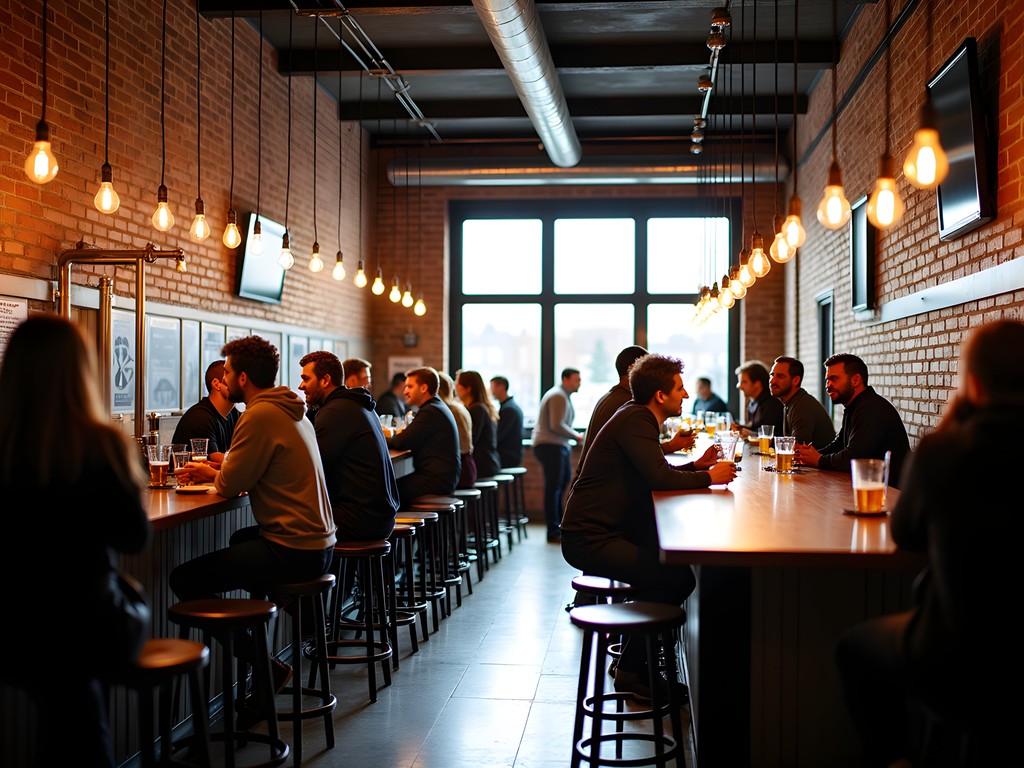
💡 Pro Tips
- Explore Riverwest and Bay View breweries by bicycle using Milwaukee's Bublr bike share system
- Visit Component Brewing for experimental small-batch releases that rarely distribute outside Milwaukee
- Check brewery social media for pop-up food vendors—many smaller breweries partner with local chefs
The Lakefront Experience: Brewing With Environmental Consciousness
Lakefront Brewery represents Milwaukee's most compelling case study in sustainable urban brewing practices. Situated along the Milwaukee River in a former power plant, Lakefront demonstrates how industrial riverfront property can be reclaimed for both production and public enjoyment.
Their brewery tour remains Milwaukee's most comprehensive (and entertaining) education in craft brewing processes. Unlike corporate brewery tours that keep visitors at a distance, Lakefront's experience brings you directly into production areas, explaining brewing with technical accuracy while maintaining accessibility—a balance I appreciate as someone who values both precision and public engagement.
What's particularly notable from an urban planning perspective is how Lakefront has integrated their operation with Milwaukee's river restoration initiatives. Their beer hall features expansive windows overlooking the river, creating a visual connection to this natural resource that was largely ignored during Milwaukee's industrial heyday. The brewery's Friday fish fry has become a civic institution, demonstrating how production facilities can double as cultural gathering spaces.
Lakefront's sustainability initiatives extend to their brewing practices—they produced the first USDA-certified organic beer and utilize local ingredients whenever possible. For serious beer enthusiasts wanting to document tasting notes across multiple brewery visits, I recommend bringing a beer tasting journal, which has simplified flavor wheels perfect for comparing Milwaukee's diverse brewing styles.

💡 Pro Tips
- Book Lakefront Brewery tours in advance—they frequently sell out, especially weekend slots
- Try their Riverwest Stein amber lager for a perfect example of Milwaukee's traditional brewing heritage with craft attention to detail
- Visit during sunset hours when the river views are particularly stunning through the beer hall windows
Hidden Taprooms: Milwaukee's Secret Brewing Spaces
Beyond Milwaukee's established brewing operations lies a network of hidden taprooms that showcase how adaptive reuse can happen at smaller scales. These spaces—often tucked into former storage rooms, garage bays, or retail storefronts—represent brewing entrepreneurship that operates below the radar of typical tourism.
Eagle Park Brewing in the western suburb of Muskego exemplifies this approach. Housed in a former auto service garage, the brewery maintains industrial elements like roll-up doors while creating an intimate taproom experience. Their limited distribution makes on-site visits essential for sampling their rotating IPA variations.
Similarly, Vennture Brew Co. in Washington Heights operates as both a specialty coffee shop and craft brewery—a dual-purpose approach to space utilization that activates their location throughout the day rather than just evening hours. This model of mixed commercial use creates more sustainable neighborhood businesses while offering unique hybrid products like their coffee-infused stouts.
My personal favorite hidden gem is Gathering Place Brewing in Riverwest, whose taproom feels like entering someone's particularly well-appointed garage workshop. Their community-supported brewery model (similar to agricultural CSAs) demonstrates alternative financing approaches for small-scale production.
Navigating between these scattered locations requires planning. I use the beer mapping app to track these smaller operations, many of which have limited hours or pop-up schedules that change seasonally. The app has saved me from arriving at locked doors multiple times.

💡 Pro Tips
- Check social media before visiting smaller taprooms as many operate with limited or seasonal hours
- Don't hesitate to talk with brewers at these smaller operations—they're typically more accessible than at larger venues
- Try 1-2 hidden taprooms rather than rushing between many—the intimate experiences deserve unhurried appreciation
Milwaukee's Beer Festival Culture: Seasonal Celebrations
Milwaukee's beer calendar revolves around seasonal festivals that transform public spaces into temporary celebration zones—a phenomenon I've studied in electronic music events globally but which takes uniquely civic forms in Milwaukee's beer culture.
Fall brings Milwaukee's most distinctive beer events, when the city's German heritage merges with craft innovation. Unlike summer festivals that sprawl across parks, autumn beer events often occupy adaptive spaces—former factories, warehouses, or underutilized public buildings temporarily transformed through careful programming.
Milwaukee Beer Week (early November) represents the most comprehensive opportunity to experience the city's brewing diversity, with special releases and collaborative brews available exclusively during this period. The events are distributed throughout the city rather than centralized, encouraging exploration of different neighborhoods and their brewing identities.
For serious beer festivals, I've found a collapsible cooler invaluable for storing special release bottles purchased throughout the day. Milwaukee's breweries often release limited festival editions that aren't available afterward, and proper storage ensures they arrive home safely.
The Beer Garden at South Shore Terrace offers a perfect example of Milwaukee's public space activation through beer culture. This county park installation demonstrates how municipalities can create seasonal gathering spaces that generate revenue while providing accessible recreation—a model other cities should study.

💡 Pro Tips
- Purchase Milwaukee Beer Week passes early as specialty events sell out quickly
- Look for brewery collaboration releases that often showcase experimental techniques
- Use rideshare services between festival locations rather than driving—Milwaukee's DUI enforcement is appropriately strict
Final Thoughts
Milwaukee's craft beer scene represents more than just good drinking—it's a masterclass in adaptive reuse, neighborhood revitalization, and cultural preservation. What impresses me most as an urban planner is how brewing operations have become anchors for neighborhood identity while honoring industrial heritage. The spatial dynamics at play—from massive brewery complexes to hidden garage taprooms—demonstrate the flexibility of urban infrastructure when communities value both preservation and innovation.
As cities nationwide struggle with repurposing industrial spaces, Milwaukee offers a compelling case study in how production, consumption, and cultural expression can coexist within thoughtfully preserved structures. The city has managed to celebrate its brewing heritage without becoming a beer-themed caricature—maintaining authentic production while creating spaces for community gathering.
Whether you're a dedicated beer enthusiast or simply interested in how cities evolve, Milwaukee's brewing landscape deserves your attention. Pack your curiosity alongside your palate, and you'll discover a city that pours its history, architecture, and future into every glass.
✨ Key Takeaways
- Milwaukee's craft breweries excel at adaptive reuse of historic industrial spaces
- Neighborhood breweries like those in Riverwest and Bay View function as community anchors beyond just beer production
- Fall represents the ideal season for experiencing Milwaukee's beer culture through seasonal festivals and special releases
📋 Practical Information
Best Time to Visit
September-November
Budget Estimate
$100-150/day including accommodations, brewery tours, and meals
Recommended Duration
3-day weekend
Difficulty Level
Easy

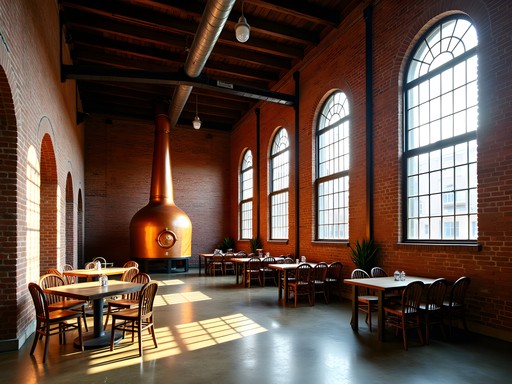

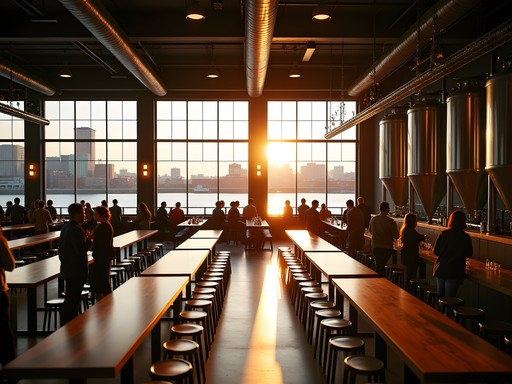
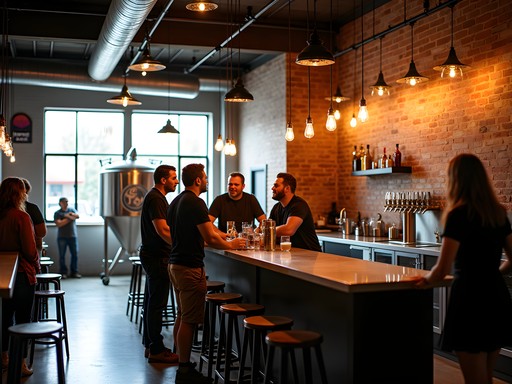




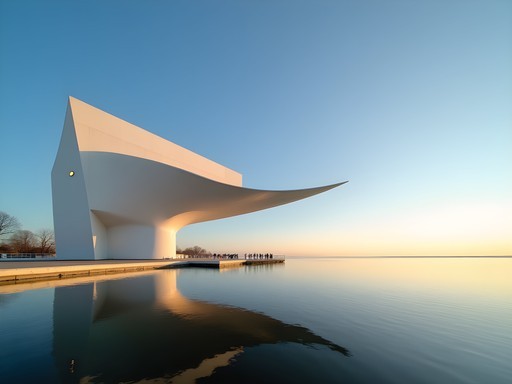






Comments
roamrider
If you're in Milwaukee on a Friday, don't miss Lakefront's fish fry! The beer-battered cod with their Riverwest Stein is the perfect combo. We had to wait almost an hour but totally worth it. The polka band makes the whole experience extra fun!
redrider
Love that shot of the sunset from Lakefront Brewery's patio! One of the best views in the city.
mountainlover5005
Any recommendations for brewery tours that are good for people who don't actually drink beer? My partner loves the brewing process and architecture but doesn't drink alcohol. Would they still enjoy these tours?
Skylar Roberts
Great question! Several Milwaukee breweries offer excellent non-alcoholic options. Lakefront Brewery makes their own craft sodas and root beer, and their tour focuses heavily on history and architecture. MobCraft and Indeed Brewing both have excellent NA options too. The historic Pabst tour is more about the buildings and Milwaukee history than drinking. Your partner will have plenty to enjoy!
mountainlover5005
That's perfect! Thanks so much for the tips. We'll definitely check out the Pabst tour.
smarthero
If you're visiting Milwaukee for the beer, try to time your trip with one of their beer festivals! Milwaukee Brewfest in July is right on the lakefront, and Wisconsin Beer Lovers Festival in June features over 40 local breweries. The smaller neighborhood festivals in Riverwest and Bay View are even better for meeting locals. Also, don't miss the brewery yoga classes at Good City Brewing - beer included after your workout!
nomadvibes
Love the photos of those converted industrial spaces! The lighting in that Menomonee Valley brewery shot is gorgeous!
Hunter Thompson
BRILLIANT post! Milwaukee is so underrated compared to other American beer cities! I backpacked through the Midwest last year and spent 3 wild days exploring Milwaukee's beer scene. The contrast between the massive historic breweries and tiny experimental spots is what makes it special. The Brewery District near downtown is like a beer theme park - I stayed at the Brewhouse Inn which is literally built inside the old Pabst brewery! Absolutely mad! The beer history tour at Miller was surprisingly good too. But the real gems were those neighborhood spots in Riverwest where you can chat with the brewers directly. Milwaukee feels more authentic than the overhyped scenes in Portland or Denver. Anyone hitting Milwaukee NEEDS to try the beer cheese soup too - perfect with a local lager!
Sage Dixon
This article captures exactly what makes Milwaukee's beer scene special! When I visited last fall, I was blown away by how the city has preserved its brewing heritage while embracing modern craft beer culture. The Pabst history tour followed by visits to innovative spots like Third Space Brewing gave me such appreciation for this evolution. What really stuck with me was how each neighborhood has its own distinct beer personality. The environmental focus at Lakefront was another highlight - their solar initiatives and water conservation practices are impressive. Milwaukee taught me that a great beer city isn't just about what's in the glass, but the stories, buildings, and community behind it. Skylar, you really nailed the essence of what makes this place special!
Robert Moreau
Skylar, your architectural perspective on Milwaukee's beer scene is refreshing! Most beer posts miss that dimension entirely. I was there in June and stayed at the Brewhouse Inn & Suites - literally built in the old Pabst brewery complex. Waking up to those massive copper brewing kettles preserved in the lobby was surreal. For anyone planning a visit, don't miss the hidden speakeasy-style taproom at Component Brewing. It's tucked away in an old gear factory, and you'd walk right past it if you didn't know. The bartender told me fascinating stories about how the building used to manufacture parts for the very brewing equipment used by the major breweries in town. Milwaukee's beer scene is truly a perfect marriage of history, craftsmanship, and innovation.
globemaster
That Brewhouse Inn sounds amazing! Adding it to my list for sure.
nomadwanderer
Any recommendations for someone who prefers lighter beers? Most craft breweries seem to focus on heavy IPAs but I'm more of a lager/pilsner person.
smarthero
Check out Third Space Brewing! Their Happy Place pale ale is perfect for non-IPA drinkers. Also, Gathering Place Brewing has some excellent lighter options and traditional German styles.
nomadwanderer
Thanks for the tips! Will definitely try those out.
Sofia Franklin
I appreciate how this post connects Milwaukee's brewing renaissance to broader urban development patterns. As someone who studies urban planning, I found the adaptive reuse angle fascinating. When I visited last year, I was struck by how the breweries in Bay View have become community anchors beyond just drinking establishments. I'd add that Milwaukee's public transit makes brewery hopping surprisingly accessible for visitors - I used the Milwaukee Hop Pass and it connected most of the major brewing districts. The environmental consciousness aspect you mentioned at Lakefront Brewery deserves more attention - their water conservation practices are setting standards for the industry.
Venture X
Premium card with 2X miles, $300 travel credit, Priority Pass